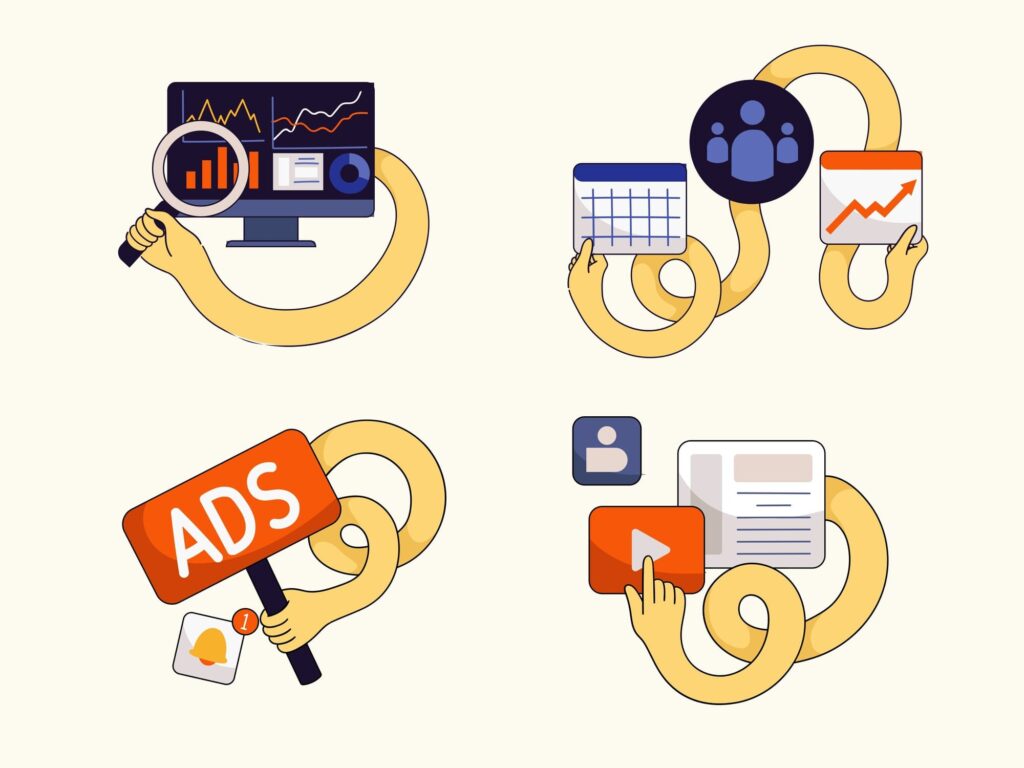Internal links are not just navigational elements.
They are SEO signals that:
- Guide search engines through your site
- Pass authority from strong to weak pages
- Build topical clusters for AI-based ranking
- Reduce bounce rate and increase engagement
- Prevent orphaned pages that stay invisible
Think of internal links as the internal highways of your site. No traffic = no growth.
What Is Internal Linking Optimization?
It’s the process of strategically placing internal links to:
- Reinforce semantic relevance
- Pass link equity (PageRank) to meaningful URLs
- Improve crawl depth and discoverability
- Create strong contextual connections between pages
Unlike backlinks, you control internal links completely, which makes them your most powerful SEO asset when used correctly.
Signs You Need Internal Linking Fixes
- Orphan pages (no internal links point to them)
- Pages 3+ clicks away from the homepage
- Posts with 0–2 internal outbound links
- Silo pages that don’t link to each other
- Too many links in navigation, not in body content
- You rely only on “related posts” or breadcrumbs
Quick Tip: Use Screaming Frog SEO tool to check orphaned pages
Internal linking is not just for blogs. It’s vital for e-commerce and local service pages.
Internal Linking Best Practices (With Examples)
Link from high-authority to low-authority pages
→ Example: From your homepage or top blog post → to a new landing page.
→ Use GSC or Ahrefs to find pages with substantial traffic and link out from them.
Use keyword-rich anchor text naturally
→ Example:
- ❌ “Click here”
- ✅ “Learn more about our [SEO Clean-up process]”
Contextual placement beats footer/sidebar links
→ Put links within the main content, not just in headers or footers.
Follow a hub-and-spoke model (topic clusters)
→ Example:
- Pillar: example.com/services/seo/
- Cluster pages:
- example.com/services/seo/technical-audit/
- example.com/services/seo/on-page-optimization/
Read more about URL Structure: How to Normalize Your URL Structure for SEO and Scalability
Avoid link stuffing
→ Google recommends keeping internal links relevant and natural.
→ Don’t place 10+ links in a single paragraph.
Fix orphaned pages
→ Use Screaming Frog or Ahrefs to find pages with zero inbound internal links.
→ Link to them from relevant blog posts or category pages.
Balance depth: Keep key pages 2-3 clicks from the homepage
→ Use site audit tools to map crawl depth.
→ Flatten overly nested URLs with better link distribution.
Tools to Audit and Optimize Internal Linking
| Tool | Use |
| Screaming Frog | Analyze top-linked pages internally |
| Ahrefs Site Audit | Find orphan pages, link depth, and strongest pages |
| Google Search Console | Analyze top linked pages internally |
| Link Whisper (for WP) | Auto-suggest internal links based on content |
| Sitebulb | Visualize internal link equity and clusters |
Internal Linking and AI Search Optimization
With Google’s SGE and other AI-powered engines, semantic relationships matter more than ever.
Internal links signal hierarchy, context, and clusters, which:
- Increases the chances of AI snippet inclusion
- Strengthens topical authority
- Allows better summarization by AI bots
A well-linked internal structure boosts both traditional SEO and AI visibility.
Final Thoughts: Small Links. Big Impact.
If you want to:
- Scale organic traffic
- Support newly published pages
- Consolidate topic relevance
- Prepare your site for AI-powered search
…then internal linking is not optional — it’s critical.
Want to know which of your pages are isolated?
Request an internal linking audit from the SEO Team.




